Part Twenty Eight. Because Puerto Rico’s death toll from 2017’s Hurricane is a metric of economic development, newspapers pressured to up the numbers. For the readers’ convenience, these columns are samplings of that pressure.
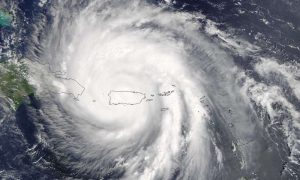 UTopiAH. 64 death certificates or 2,975 survey? This is Part 28 of a series for comparing life expectancy, because death rates are the new metric of economic development. Included are medical conditions ranking Utah’s #1 for health. When nose counts don’t give the answer wanted, the pressure is to turn to surveys, sampling one in many hundreds, and expanding out to the desired conclusion Where should a named memorial be built listing names from the Puerto Rico Hurricane.
UTopiAH. 64 death certificates or 2,975 survey? This is Part 28 of a series for comparing life expectancy, because death rates are the new metric of economic development. Included are medical conditions ranking Utah’s #1 for health. When nose counts don’t give the answer wanted, the pressure is to turn to surveys, sampling one in many hundreds, and expanding out to the desired conclusion Where should a named memorial be built listing names from the Puerto Rico Hurricane.
Part Twenty Eight. Because Puerto Rico’s death toll from 2017’s Hurricane is a metric of economic development, newspapers pressured to up the numbers. For the readers’ convenience, this Dec. 18, 2017 column is a samples.
Backstory. In September 2017, two Hurricanes moved, hit, drowned over Puerto Rico. Storms, disasters, commotion bring eyes to the media, boosting ratings. The worse the disaster the better the coverage. Hurricanes destroy by a sea surge, flying debris, and tornadoes. Being warned, the Puerto Ricans population of just under four and a half million sought shelter. Power was lost, homes 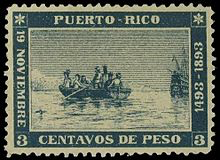 destroyed, roads blocked. In the weeks afterward, physicians certified 64 storm deaths caused by the storms sea surge, drowning and being struck by wind debris. Each death certificate was completed by a coroner, with name, gender, description, date, and cause of death. In 2015 28,085 deaths in Puerto Rico were reported on death certificates. See Part 25 for the breakdown of causes in 2015. Unsatisfied, hoping or expecting more deaths, media demanded and pushed for an increase in storm deaths count. In response to the political pressure, the government of Puerto Rico ordered a fresh report. Over the next year, in order to increase the count, the definition for Puerto Rican storm deaths were
destroyed, roads blocked. In the weeks afterward, physicians certified 64 storm deaths caused by the storms sea surge, drowning and being struck by wind debris. Each death certificate was completed by a coroner, with name, gender, description, date, and cause of death. In 2015 28,085 deaths in Puerto Rico were reported on death certificates. See Part 25 for the breakdown of causes in 2015. Unsatisfied, hoping or expecting more deaths, media demanded and pushed for an increase in storm deaths count. In response to the political pressure, the government of Puerto Rico ordered a fresh report. Over the next year, in order to increase the count, the definition for Puerto Rican storm deaths were 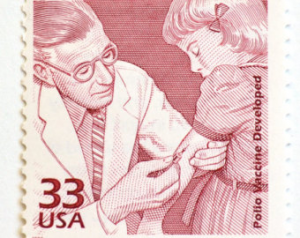 broadened beyond wind and water, to include suicides, sepsis, dialysis, diabetes, heart attack, and medicine. Of necessity, Puerto Rico’s coroners were declared incompetent to complete death certificates. Also, rather than use the newly incompetent death certificates, each with a deceased’s name, new statistical surveys were used by sampling one in six hundred households, and then multiplying the results by six hundred. No individual names, individual genders or causes, but a new an higher count. The 2018 statistical survey listed storm deaths at 2,975, an accuracy not supported by significant numbers in the survey. The conclusion noted that deaths are a metric of economic activity, and that the increase in storm deaths was due, not to drowning or debris striking, but to failure of the health system, missing doctors, missing ambulances, missing electrical and utility grid. The missing doctors were not due to a failure of the emergency response, but to generations of failure to train doctors, restrictions on medical school seats. Note no one complained about an absence of lawyers, because law schools annually graduate three times the lawyers as medical schools graduate physicians. Likewise no mention regrets a shortage of insurance salesmen, car dealers, handy-men, or other vocations, just health care.
broadened beyond wind and water, to include suicides, sepsis, dialysis, diabetes, heart attack, and medicine. Of necessity, Puerto Rico’s coroners were declared incompetent to complete death certificates. Also, rather than use the newly incompetent death certificates, each with a deceased’s name, new statistical surveys were used by sampling one in six hundred households, and then multiplying the results by six hundred. No individual names, individual genders or causes, but a new an higher count. The 2018 statistical survey listed storm deaths at 2,975, an accuracy not supported by significant numbers in the survey. The conclusion noted that deaths are a metric of economic activity, and that the increase in storm deaths was due, not to drowning or debris striking, but to failure of the health system, missing doctors, missing ambulances, missing electrical and utility grid. The missing doctors were not due to a failure of the emergency response, but to generations of failure to train doctors, restrictions on medical school seats. Note no one complained about an absence of lawyers, because law schools annually graduate three times the lawyers as medical schools graduate physicians. Likewise no mention regrets a shortage of insurance salesmen, car dealers, handy-men, or other vocations, just health care.
- https://www.nytimes.com/2017/12/18/us/puerto-rico-hurricane-maria-death-toll-review.html
- Puerto Rico Orders Review and Recount of Hurricane Deaths
- Wreckage from Hurricane Maria in Arecibo, Puerto Rico, in September.CreditCreditVictor J. Blue for The New York Times
By Patricia Mazzei Dec. 18, 2017
Facing mounting evidence that Puerto Rico has vastly undercounted the number of people who died because of Hurricane Maria, Gov. Ricardo A. Rossell, ordered on Monday that every death on the island since the calamitous storm be reviewed.
Officials will look again at all deaths attributed to natural causes after the hurricane, which made landfall Sept. 20 and knocked out power to 3.4 million Puerto Ricans — and to their hospitals and clinics. Parts of the island are still without power almost three months later, and the power grid is operating at only 70 percent of capacity.
The prolonged blackout hampered critical medical treatment for some of the island’s most vulnerable patients, including many who were bedridden or dependent on dialysis or respirators. But if they died as a result, the storm’s role in their deaths may have gone officially unrecorded.
“This is about more than numbers, these are lives: real people, leaving behind loved ones and families,” Mr. Rosselló said in a statement.
The governor acknowledged on Monday that the death toll “may be higher than the official count certified to date” — an apparent about-face for his administration, which has spent months stubbornly defending its counting method, even as it became obvious that it did not reflect the unusually high death rate in Puerto Rico after the storm.
Several news organizations, including The New York Times, conducted independent analyses and found that the number of deaths traceable to the storm was probably far higher than the official count of 64.
The Times’s review, based on daily mortality data from Puerto Rico’s vital statistics bureau, found that 1,052 more people than usual had died across the island in the 42 days after Maria struck. The analysis compared daily figures for 2017 with an average of figures for the corresponding days in 2015 and 2016.
Puerto Rico’s Center for Investigative Journalism reached a similar estimate, that 1,065 more people than usual had died in September and October. CNN compiled figures from half the island’s funeral homes to report that funeral directors believed that 499 more deaths than the official count were tied to the hurricane.
Official mortality figures from all causes on the island are revised often as the government obtains more information about events after the storm. Since The Times published its analysis on Dec. 8, Puerto Rico has recorded seven more deaths that happened in September and 31 more for October.
Methods for counting storm deaths vary by state and locality. In some places, officials include only direct deaths, such as people who drown in storm floodwaters. Puerto Rico’s method is not that restrictive; the medical examiner includes some deaths indirectly caused by a storm, such as suicides.
The leading causes of death on the island in September were diabetes and Alzheimer’s disease, Puerto Rican government data show. But there was a sharp spike — by 50 percent — in the number of recorded deaths from sepsis, a complication of severe infection that can be tied to delayed medical care or poor living conditions.
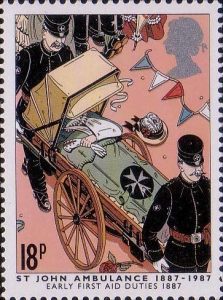 Reviewing the circumstances surrounding each death will require interviewing family members and doctors who signed death certificates to find out if, for example, a heart attack might have been brought on by stress from the hurricane, or might have been fatal because an ambulance could not get through debris-blocked streets in time to help.
Reviewing the circumstances surrounding each death will require interviewing family members and doctors who signed death certificates to find out if, for example, a heart attack might have been brought on by stress from the hurricane, or might have been fatal because an ambulance could not get through debris-blocked streets in time to help.
Harry Figueroa, a 58-year-old teacher, died in Caguas on Oct. 4 from pneumonia, and his family blamed the power outage for his death. His daughter, Lisandra M. Figueroa, said her father was obese and needed the help of a CPAP machine to keep breathing safely while asleep, but it would not work without power.
“Between the dust, the rain and the heat, he kept getting sicker,” said Ms. 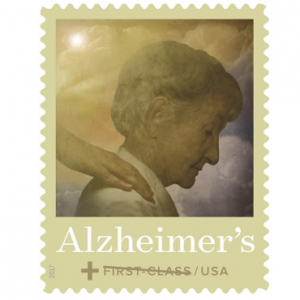 Figueroa, 30. She was skeptical that the government could adequately investigate all of the cases like his on the island.
Figueroa, 30. She was skeptical that the government could adequately investigate all of the cases like his on the island.
“I don’t know if it will be possible, because of the chaos in this country,” she said. “I don’t know how they’re going to do that. They’re going to have to request autopsies of all the bodies.”
That would no longer be possible in many cases. In the first four weeks after the storm, [Sept-Oct 2017] Puerto Rico authorized 911 cremations of people whose deaths were attributed to natural causes.
Mr. Rosselló had previously said that his government would look into questionably attributed deaths reported by the news media. Pressure mounted last week [Dec 4 2017] when two Democratic members of Congress, Nydia M. Velazquez of New York and Bennie Thompson of Mississippi, asked the Government Accountability Office to review the hurricane death toll in
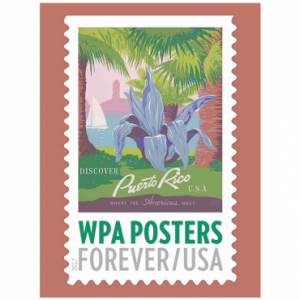 Puerto Rico and the United States Virgin Islands.
Puerto Rico and the United States Virgin Islands.
On Monday, [Dec 13th, 2017] the governor said he welcomed the published reviews of the death toll, but he cautioned that the government could not adjust its official mortality count based on “statistical analysis.”
“Every life is more than a number, and every death must have a name and vital information attached to it, as well as an accurate accounting of the facts related to their passing,” he said.
Getting the death toll right is important for disaster planning, according to Alexis Santos, director of the graduate program in applied demography at Penn State University.
“This is not a vanity exercise,” said Mr. Santos, who is Puerto Rican. “Effective assessment of climate disasters is the only way we can prevent loss of life in future events.”
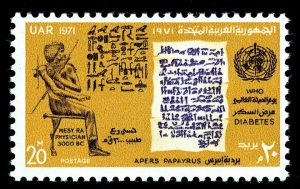 The death toll can be a metric of economic development: Poorer localities tend to have more deaths and fewer economic losses after disasters than wealthier places, according to John Mutter, a professor at Columbia University who studied deaths from the 2010 Haiti earthquake and Hurricane Katrina in 2005.
The death toll can be a metric of economic development: Poorer localities tend to have more deaths and fewer economic losses after disasters than wealthier places, according to John Mutter, a professor at Columbia University who studied deaths from the 2010 Haiti earthquake and Hurricane Katrina in 2005.
“It’s a measure of how well you protected your people, and Puerto Rico is in this odd position where it’s not a state, their people are citizens, and were it a state, it would be the poorest state in the nation,” he said.
For weeks after the storm, top leaders of Puerto Rico’s government insisted that its count of the dead was accurate and not significantly low. On Sept. 29, [2017] nine days after Maria made landfall, Héctor M. Pesquera, Puerto Rico’s public safety secretary, said he did not think the count would rise by much. Four days later, President Trump visited the island and remarked that the death toll — which officially stood at 16 at the time — was much lower than the 1,833 people who died in 2005 because of Hurricane Katrina.
Mr. Pesquera repeatedly said that Puerto Rico hewed to the Centers for Disease Control and Prevention’s protocols for counting storm-related deaths, and urged families to share information with the authorities about any deaths that may be linked to the storm.
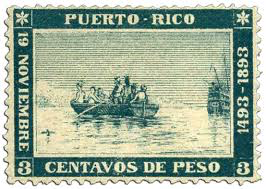 But he also dismissed questions about whether the government had an obligation to look into the surge in deaths attributed to natural causes after the storm. When the mayor of San Juan, Carmen Yulín Cruz, said in a Nov. 4 television interview that Maria’s toll might be 500, and not 55, the official count at the time, Mr. Pesquera called her statement “irresponsible.” On Monday, his spokeswoman directed requests for comment to Governor Rosselló’s office.
But he also dismissed questions about whether the government had an obligation to look into the surge in deaths attributed to natural causes after the storm. When the mayor of San Juan, Carmen Yulín Cruz, said in a Nov. 4 television interview that Maria’s toll might be 500, and not 55, the official count at the time, Mr. Pesquera called her statement “irresponsible.” On Monday, his spokeswoman directed requests for comment to Governor Rosselló’s office.
“We always expected that the number of hurricane-related deaths would increase as we received more factual information — not hearsay — and this review will ensure we are correctly counting everybody,” Mr. Rosselló said in his statement on Monday. ****
Disclaimer: The author of each article published on this web site owns his or her own words. The opinions, beliefs and viewpoints expressed by the various authors and forum participants on this site do not necessarily reflect the opinions, beliefs and viewpoints of Utah Standard News or official policies of the USN and may actually reflect positions that USN actively opposes. No claim in public domain or fair use. © Edmunds Tucker.
Utah Standard News depends on the support of readers like you.
Good Journalism requires time, expertise, passion and money. We know you appreciate the coverage here. Please help us to continue as an alternative news website by becoming a subscriber or making a donation. To learn more about our subscription options or make a donation, click here.
To Advertise on UtahStandardNews.com, please contact us at: ed@utahstandardnews.com.


Comments - No Responses to “Part Twenty Eight. Because Puerto Rico’s death toll from 2017’s Hurricane is a metric of economic development, newspapers pressured to up the numbers. For the readers’ convenience, these columns are samplings of that pressure.”
Sure is empty down here...